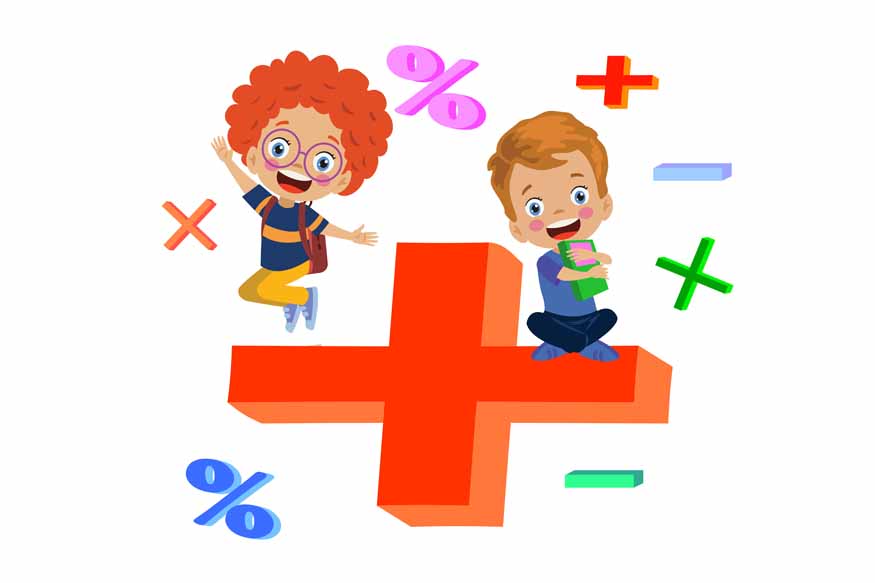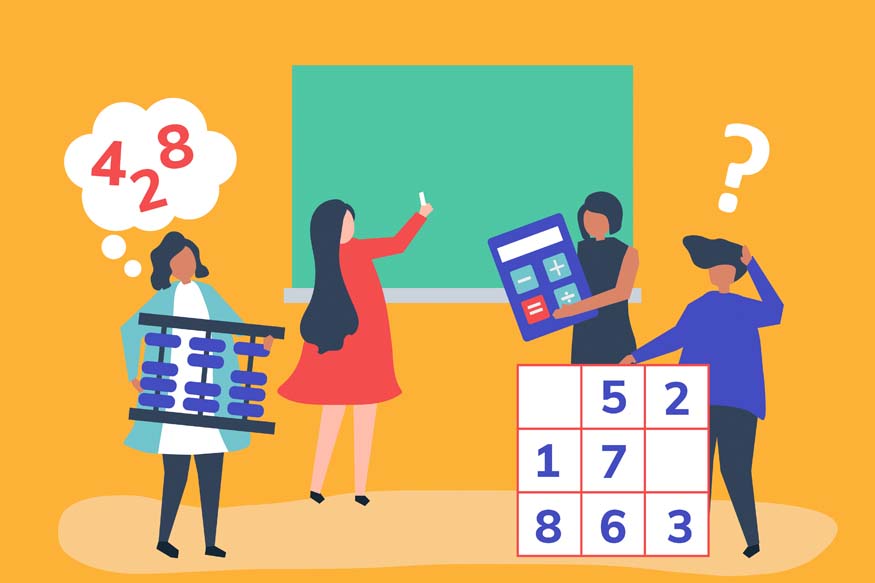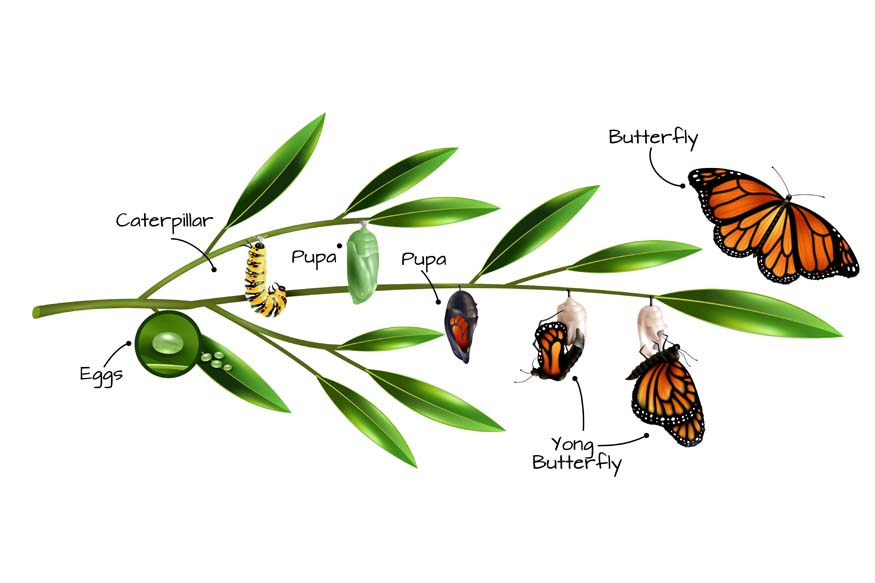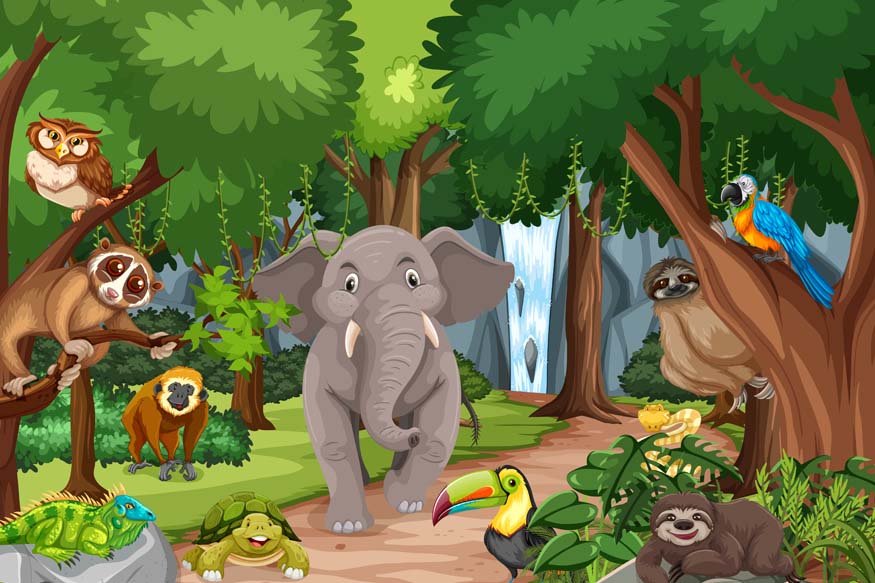Addition is one of the fundamental building blocks of mathematics and something we use every day. From counting our toys to calculating the total cost of our snacks, addition is everywhere. In this guide, we will dive into the basics of addition, explore some fun ways to learn and practice it and share interesting facts to make the journey even more exciting.
What is Addition?
Addition is the process of combining two or more numbers to find their total or sum. It is like putting together pieces of a puzzle to see the whole picture. The numbers being added are called “addends,” and the result is called the “sum.”
For example:
2 + 3 = 5
In this equation, 2 and 3 are the addends, and 5 is the sum.
Why is Addition Important?
Addition is a crucial skill that forms the foundation for more advanced math concepts like subtraction, multiplication, and division. It helps us understand quantities, measure objects, solve problems, and make sense of the world around us. Whether you are adding up points in a game or figuring out how many apples you have, addition is always there to help!
Fun Ways to Teach Addition to Kids
Teaching addition to kids can be fun and engaging with the right activities and techniques. Here are some creative ways to make learning addition enjoyable —
- Use Visual Aids
- Play Math Games
- Sing Songs and Rhymes
- Use Everyday Activities
Visual aids like pictures, objects, and drawings can help kids understand addition better. For example, you can use counters, blocks, or beads to represent numbers and show how they combine to form a sum.
Example: Place 3 red blocks and 2 blue blocks together and count the total: 3 + 2 = 5 blocks.
Fun Fact: Using visual aids can improve memory retention and make learning more interactive!
Games are a fantastic way to make learning addition fun. Many math games involve addition, such as board games, card games, and online interactive games.
Example: Play a board game where kids move their pieces forward based on the sum of two dice rolls. This helps them practice addition while having fun.
Fun Fact: Playing math games can enhance problem-solving skills and boost confidence!
Songs and rhymes with catchy tunes can make learning addition enjoyable and memorable. Create simple addition songs or use existing ones to reinforce concepts.
Example: Sing a song that counts objects and adds them together: “One little, two little, three little apples… all together, they make six!”
Fun Fact: Music and rhythm can enhance learning and improve recall of mathematical concepts!
Incorporate addition into daily activities to show its practical use. Cooking, shopping, and playing are great opportunities to practice addition.
Example: While baking, ask kids to add the number of eggs, cups of flour, and spoons of sugar needed for the recipe.
Fun Fact: Real-life applications of addition help kids understand its importance and relevance!
Interesting Facts About Addition
- History: The concept of ‘addition’ has been around for thousands of years. Ancient civilizations like the Egyptians and Babylonians used simple methods of addition in their daily lives.
- Symbols: The plus sign (+) used for addition was first introduced by mathematician Johannes Widmann in the late 15th century.
- Mental Math: Practicing mental addition can improve brain function and cognitive abilities. It is like a workout for your brain!
Teaching Addition with Word Problems
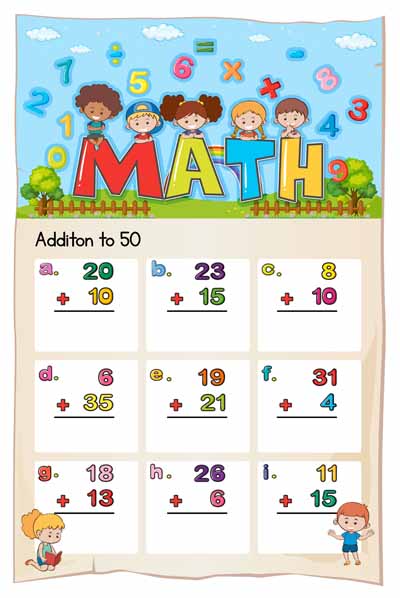
Word problems are a great way to teach addition in a context that kids can relate to. They help develop critical thinking and problem-solving skills. Here are some examples:
Example 1: “Sarah has 4 apples, and her friend gives her 3 more. How many apples does Sarah have now?”
4 + 3 = 7
Sarah has 7 apples.
Example 2: “There are 5 birds on a tree. Three more birds join them. How many birds are on the tree now?”
5 + 3 = 8
There are 8 birds on the tree.

Components of Addition with Examples
|
Addition Concept |
Explanation |
Example |
|
Basic Addition |
Combining two numbers to find the sum |
3 + 2 = 5 |
|
Addends |
The numbers being added |
In 4 + 3, the addends are 4 and 3 |
|
Sum |
The result of the addition |
In 4 + 3 = 7, the sum is 7 |
Tips for Parents and Teachers
- Be Patient: Learning addition takes time and practice. Be patient and encouraging as kids work through problems.
- Use Positive Reinforcement: Praise kids for their efforts and celebrate their successes to build confidence.
- Practice Regularly: Consistent practice helps reinforce concepts and improve skills.
- Make It Fun: Keep the learning experience enjoyable with games, songs, and interactive activities.
Addition is a fundamental math skill that opens the door to many other mathematical concepts. By using creative and engaging methods, you can help kids develop a strong foundation in addition and foster a love for learning math. So, grab your pencils, blocks, and songs, and let us start adding up the fun!
For more such informative/interesting blogs, visit Center Point School.

